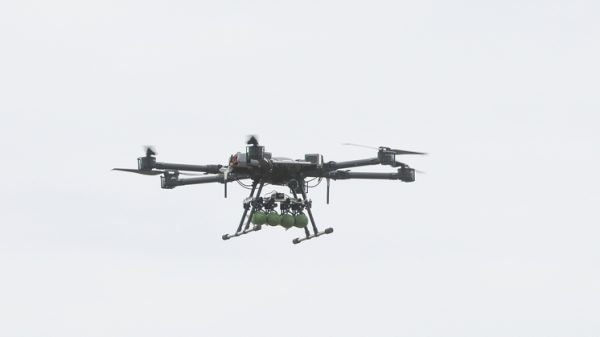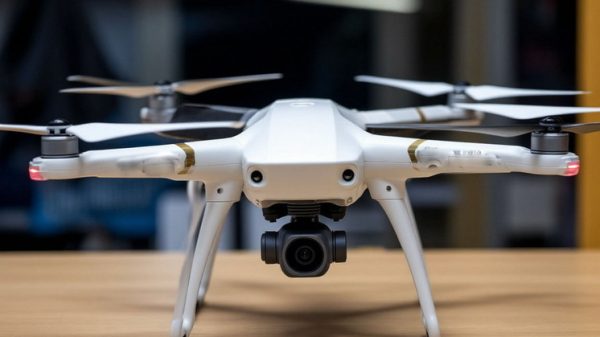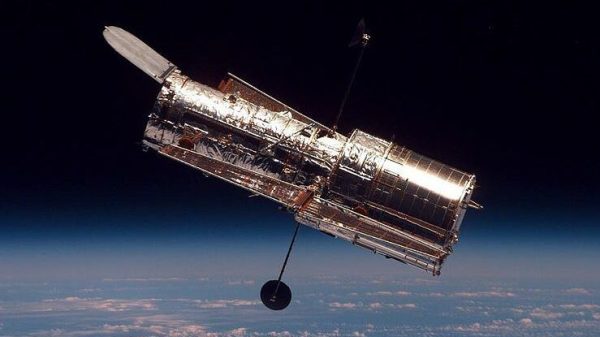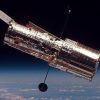The author of the theory of relativity was right about “black holes”
Albert Einstein was right, says a new study: at the edge of black holes there is a region where matter can no longer remain in orbit and instead falls inward, as his theory of gravity predicted.

Using telescopes capable of capturing X-rays, a team of astronomers has for the first time discovered this region, called the “plunging region,” in a black hole located about 10,000 light-years from Earth, CNN reports.
“We ignored this region because we didn't have the data,” said research scientist Andrew Mummery, lead author of the study published Thursday in the Royal Astronomical Society's journal Monthly Notices. “But now that we have the data, we can't explain it any other way.”
This isn't the first time black holes have helped confirm Einstein's grand theory, which is also known as general relativity, he notes. CNN.
The first photograph of a black hole, taken in 2019, previously confirmed the revolutionary physicist's basic assumption that gravity is simply matter bending the fabric of space-time.
Many of Einstein's other predictions have been confirmed over the years, including including gravitational waves and the universal speed limit.
“At the moment it is difficult to oppose them,” said Andrew Mummery, a Leverhulme-Peierls research fellow in the physics department at the University of Oxford in the UK.
“We specifically started looking for this person — that was our plan. We debated for a long time about whether we would ever find him,” Mummery emphasizes. “People said it couldn't be done, so to have it confirmed that it exists is really exciting.”
The observed black hole is in a system called MAXI J1820+070, which consists of a star smaller than the Sun and the black hole itself, which is estimated to have a mass of 7-8 solar masses. Astronomers used NASA's NuSTAR and NICER space telescopes to collect data and understand how hot gas, called plasma, from a star is sucked into a black hole.
NuSTAR is short for Nuclear Spectroscopic Telescope Array, which orbits Earth , and NICER, formally known as the Neutron Star Interior Researcher, is located on the International Space Station.
NASA's NuSTAR Space Telescope, shown here in the author's concept, was used for the first time to detect a «subducting region» around a black hole.
“These black holes have large disks of material (from nearby stars) rotating around them,” says Mummery. “Most of this substance is stable, which means it can move around freely. It's like a river, while the falling area is like the edge of a waterfall — all your support is gone and you're just falling headfirst. Most of what you can see is the river, but at the very end there is a tiny section that is essentially what we discovered,” he added, noting that although the “river” was observed by many , this is the first evidence of the existence of a “waterfall”.
Unlike the event horizon, which is closer to the center of the black hole and does not let anything out, including light and radiation, in the “submerging region” light can still escape , but matter is doomed to do so due to the powerful gravitational pull, explains Andrew Mummery.
The results of the study may help astronomers better understand the formation and evolution of black holes. “We can really learn more about them by studying this region because it's on the very edge and it gives us more information,” Mummery said.
The only thing missing from the study is real image of a black hole because it is too small and far away, CNN notes.
But another team of Oxford researchers is working on something even better than just a picture: the first film about a black hole. To achieve this goal, the team will first need to build a new observatory, the African Millimeter Telescope in Namibia, which is expected to be operational within a decade. The telescope, which will join the international Event Horizon Telescope collaboration that captured a groundbreaking image of a black hole in 2019, will allow scientists to observe and film large black holes at the center of the Milky Way galaxy and beyond.
Finding actual evidence of a “subducting region” is an important step that will allow scientists to significantly improve their models of how matter behaves around a black hole, said Christopher Reynolds, a professor of astronomy at the University of Maryland, College Park. “For example, it could be used to measure the rotation speed of a black hole,” said Reynolds, who was not involved in the study.
Dan Wilkins, a research scientist at Stanford University in California, calls it an exciting event and notes that in 2018, an incredibly bright flash of light combined with an abundance of high-energy X-rays came from one of the black holes in our galaxy.
< "At the time, we assumed that this excess was caused by hot material in the 'submerged region,' but we did not have a full theoretical prediction of what this radiation would look like," said Wilkins, who was also not involved in the new study.
This study actually performs that calculation, he added, using Einstein's theory of gravity to predict what X-rays emitted by matter in the “dive region” around the black hole will look like and compare them with data from this bright flare in 2018.
“This will be a major discovery site over the next decade or so,” says Dan Wilkins, “as we await the next generation of X-ray telescopes that will allow us to conduct more detailed measurements of the innermost regions located just beyond the event horizons of black holes.”


























































Свежие комментарии